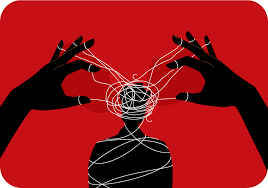Title: How Environmental Factors Shape Our Thinking Patterns: The Hidden Architects of the Mind
Author name: Farhat Abbas
Introduction
We tend to think our thoughts simply originate within us—our reason, values, or smarts. But in fact, our environment significantly, and often invisibly, influences the way we think, what we believe, and how we see the world.
From the houses we raise children in to the hues of our workplace, from air to social environments, environmental aspects affect how information is processed in our brain. Recognizing this relationship not only enhances our understanding of human psychology but also invites us to design more nurturing and empowering environments for mental health.
What Do We Mean by “Environment”?
In psychology, “environment” is used to describe both physical surroundings (lighting, space, noise, pollution, design) and social environments (family, peers, culture, media, education). Both have a significant impact on cognitive functioning, emotional control, and mental health.
These environments don’t merely influence our mood—they influence the way we think.
How Environmental Factors Influence Thinking Patterns
1. Early Home Environment and Cognitive Development
The home environment’s quality—like emotional warmth, language availability, physical safety, and mental stimulation—strongly affects the development of thinking patterns.
Kids brought up in rich environments typically have:
Better verbal abilities
Improved memory and concentration
Increased emotional competence
Conversely, neglectful or disorganized environments will distort thought patterns like low self-esteem, rigid beliefs, or cognitive defensiveness.
2. Social Environment: The Power of Influence
Our attitudes, beliefs, and thinking patterns are influenced significantly by the people we are surrounded by. These include:
Family processes: Communication and conflict patterns influence how we incorporate our self-concept.
Peer groups: Group norms and social comparison determine self-esteem and critical thinking.
Cultural conditioning: Cultural messages control what we think about success and failure, gender roles, and morality.
These social factors tend to act beneath conscious awareness, influencing thinking styles such as prejudice, self-doubt, ambition, or resilience.
3. Noise, Light, and Physical Space
Apparently insignificant physical influences greatly impact concentration, memory, and decision-making:
Excessive noise heightens cognitive exhaustion and diminishes problem-solving.
Poor lighting (particularly absence of natural light) can interfere with circadian rhythm and attenuate focus.
Disorganized spaces burden the brain’s sensory system, rendering thoughtful reasoning more difficult.
Organized, peaceful, and well-lit spaces facilitate clarity, productivity, and peaceful mental processing.
4. Urban Living and Overload of Information
Individuals in densely populated urban areas are bombarded with stimuli—ads, screens, traffic, conversation, notifications. This sustained input creates:
Decision fatigue
Hyper-vigilance and shortened attention span
Stress-based thinking on the increase (fight-or-flight response)
Chronic over-stimulation reconditions the brain for reactivity instead of reflection.
5. Nature and Green Spaces: A Natural Reset
Time in nature has been shown to replenish attention, facilitate creative thinking, and lower mental fatigue. Green spaces lower cortisol and strengthen the brain’s default mode network—facilitating daydreaming, memory, and problem-solving.
> ???? Stanford and University of Michigan studies affirm that even a 20-minute walk outside increases cognitive functioning and happiness.
6. Media Environment: Shaping Reality Perception
The media we receive—TV, social media, news, movies—influences our cognitive filters. Ongoing exposure to a particular narrative or image impacts:
Negative thinking (resulting from frequent exposure to violence or negativity)
Distortions in body image
Dichotomous thinking (us versus them mindsets)
Unrealistic views of success or beauty
Our media environment becomes the mental lens through which we translate real life.


